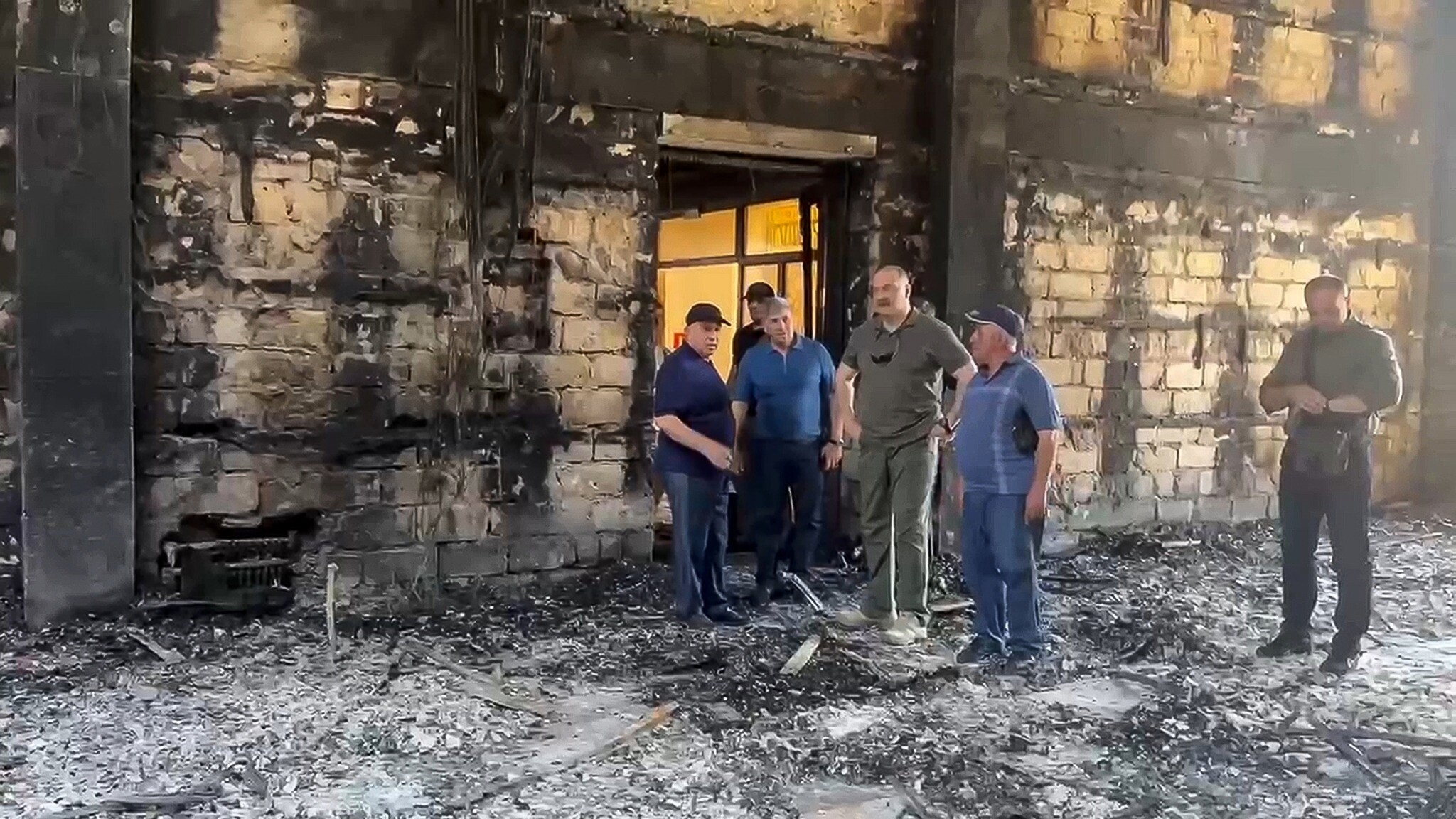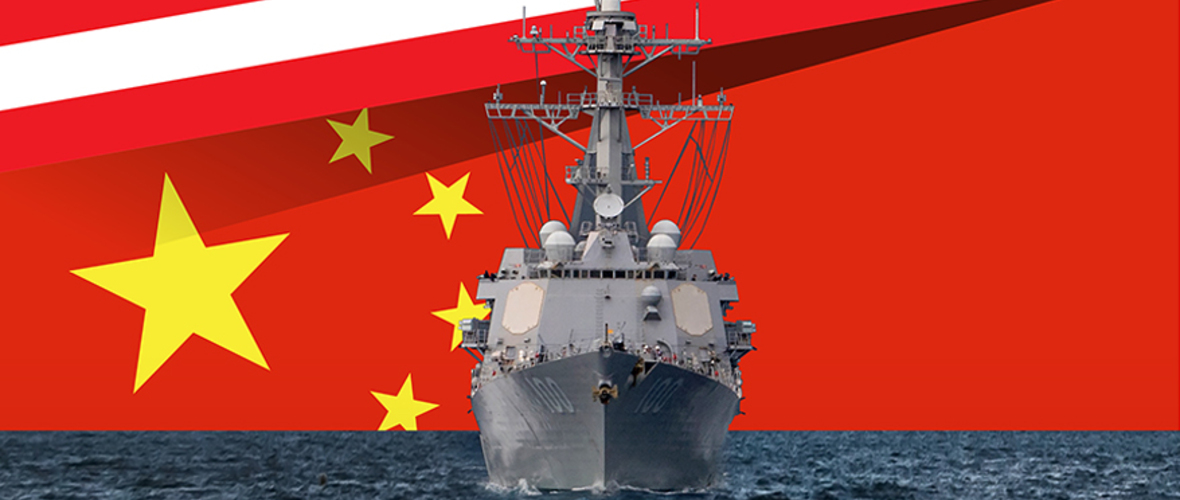While the rest of Europe seems to have firewalled itself from major terror attacks, Russia appears the most vulnerable.
No sooner had the blood been wiped from the horrific Crocus City Hall attack by IS on the outskirts of Moscow, terror raised its ugly head again in Russia. This time, it was in the Muslim-dominated Dagestan, long a hotbed of Islamic radicalism but relatively tranquil for last so many years.
Suicide pairs of unidentified terrorists traced a bloody path through the cities of Derbent and Makhchkala on the orthodox festival of Pentecost, firing indiscriminately. The unprovoked attack left 20 people dead, including 15 police officers and several injured. The Russian authorities claimed that all five attackers were gunned down.
While no group has taken responsibility for this attack, it serves as a stark reminder of Russia’s long-running conflict with terror, especially Islamist jihadists. However, this time again, like the Crocus attack, the Russians pointed to a Ukrainian hand behind the outrage.
Background
Russia is no stranger to jehadi terror as it has waged a long-lasting campaign against ultra-radical Islamists in both Chechnya and Dagestan for decades. The period between 2007 and 2017 was especially violent when the Caucasus Emirate, later called the Islamic Emirate of the Caucasus, staged several attacks in Dagestan and the neighbouring republics of Chechnya and Ingushetia. Similarly, Chechenia saw heavy fighting with no holds barred in the 1900s and 2000s, with entire city blocks razed to the ground to ferret out Islamic fighters barricaded in the urban landscape. Eventually, an uneasy peace prevailed in these restive provinces. Volunteers from Dagestan and Chechenia have been serving the Russian Army well on the frontlines against Ukraine.
However, like a festering wound, violence has returned to disrupt the fragile peace in the region and further destabilise Russia, already bogged down in the steppes of Ukraine. Clearly, under the fog of the war in Ukraine, IS has been busy enrolling cadres within Russia and in the bordering regions of central Asia. The Islamic State Vilayat Caucasus, founded in 2015, also exists and operates in the historically conflict-prone Northern Caucasus region.
The Crocus attack was claimed by the Islamic Caliphate, a Salafi jihadist terror group, with the primary objective of establishing an Islamic Caliphate globally. Since its inception, anti-Russian propaganda has been built into the IS foundational doctrine. It borrows these sentiments from its predecessor, Al Qaeda in Iraq. Its media wing has been the strongest in spreading its ideology against the ‘Crusader East’, as they call Russia.

Analysis
Russia has a long history of crossing swords with the adherents of Islam, not only at home but also in Afghanistan and Syria. As per Moscow Times (5 March 2019), Russia’s grand mufti had claimed that by 2034, “around 30 per cent of the Russian population will practice Islam.” As many as seven republics of the Russian Federation have Muslim majority populations- Bashkortostan and Tatarstan in the Volga-Ural region, and Chechnya, Ingushetia, Dagestan, Kabardino-Balkaria, and Karachay-Cherkessia in North Caucasus. The heavy hand of Moscow under the Soviets did much damage to the relationship between the Muslims of these Republics and the rest of Russia.
Islamic State has fully exploited these sentiments, accusing Moscow of maltreatment of the community, both at home and abroad. Russia’s repressive military operations in its southern periphery, particularly Chechnya and Dagestan, led to increased extremist ideologies in the region. The IS would be particularly peeved at Russia’s strong support for the hated Assad regime in Syria and the growing presence of the Wagner Group (renamed Africa Corps after the short-lived mutiny) in the Sahel region of Africa. Thus, it comes as little surprise that Russia has once again become a focal point of the ideological narratives of the jihadist movements.
Undoubtedly, Islamic terror poses a serious problem to Putin. After all, internal and external security was one of his major planks for seeking power in the late 1990s. The Kremlin’s tenuous hold over its restive regions would appear weakened if these attacks continue with impunity. Even more serious is the presence of a large number of Muslim populations in and around Moscow.
The perplexing question remains: how did a formidable power like Russia, boasting a highly advanced intelligence apparatus, fail to avert the ensuing carnage?
There are many explanations, but the most obvious one would be the war in Ukraine taking much of the attention; Islamic terror easily slipped under the radar. Even a very specific warning by the U.S. was rejected, just like the Sri Lankan case before the infamous Easter Sunday bombings. Putin was dismissive of the warning, calling the attackers “agents of Western special services trying to inspire pogroms in Russia.”
Russian accusations of Ukrainian involvement may not be entirely imaginary or fictional. Kyiv has demonstrated not only immense resilience but also a level of State and warcraft that has often left the Russian giant flabbergasted. Creating ideal operational conditions for Islamic terror squads and infiltrating them into the largely porous Russian frontiers through one of the many Russian republics would not be very difficult. After all, all is fair in war!
Terrorist organisations have imbibed many operational lessons from the decades of the Global War on Terror waged by the U.S. and its allies. While the American homeland has more or less been safe from major terror attacks, Europe has regularly felt the pain of ‘lone wolf’ attacks by individuals or non-radicalised youths. With recruitment and radicalisation in cyberspace, sovereign boundaries are no longer relevant.
Russia has acknowledged its vulnerability, and Putin has assured a worried nation, “Our security forces must redouble their efforts to safeguard our nation from internal and external threats, especially in these challenging times.”
Surprisingly, once its sworn enemy, the Afghan Taliban has been increasingly cosying up to Moscow. They, too, are confronting the IS (K) and have their hands full in dealing with this deadly foe that is even more radical than the Taliban. Recently, Russia was the first country to delist the Taliban as a terrorist organisation. Moscow aims to bolster its southern borders with the help of the Taliban, which they claim poses a lesser threat than ISIS.
Assessment
- The ‘pink fog’ of attributing Russian attacks to the scheming of Ukraine and the West would lead to bigger problems. Russia must secure its heartland while it endeavours to occupy its claims in Crimea and Eastern Ukraine. Overextending its limited military and human resources would only open it to more terror attacks.
- The terror attacks are a reminder of the danger that terror groups like IS pose not only to Russia but the entire world. While they may be largely dormant at this stage, with the attention of the world being diverted to more conventional conflicts, it is prime time for them to exploit the chinks in the armour of their Islamic and non-Islamic enemies. Nations like India, untouched by major terror attacks for more than a decade, need to be extra watchful.
- Russia needs to move quickly before the IS abuses the geopolitical situation in Eurasia to its favour. Addressing impunity for past and present human rights violations in Dagestan and throughout Russia’s North Caucasus region becomes a necessity.




